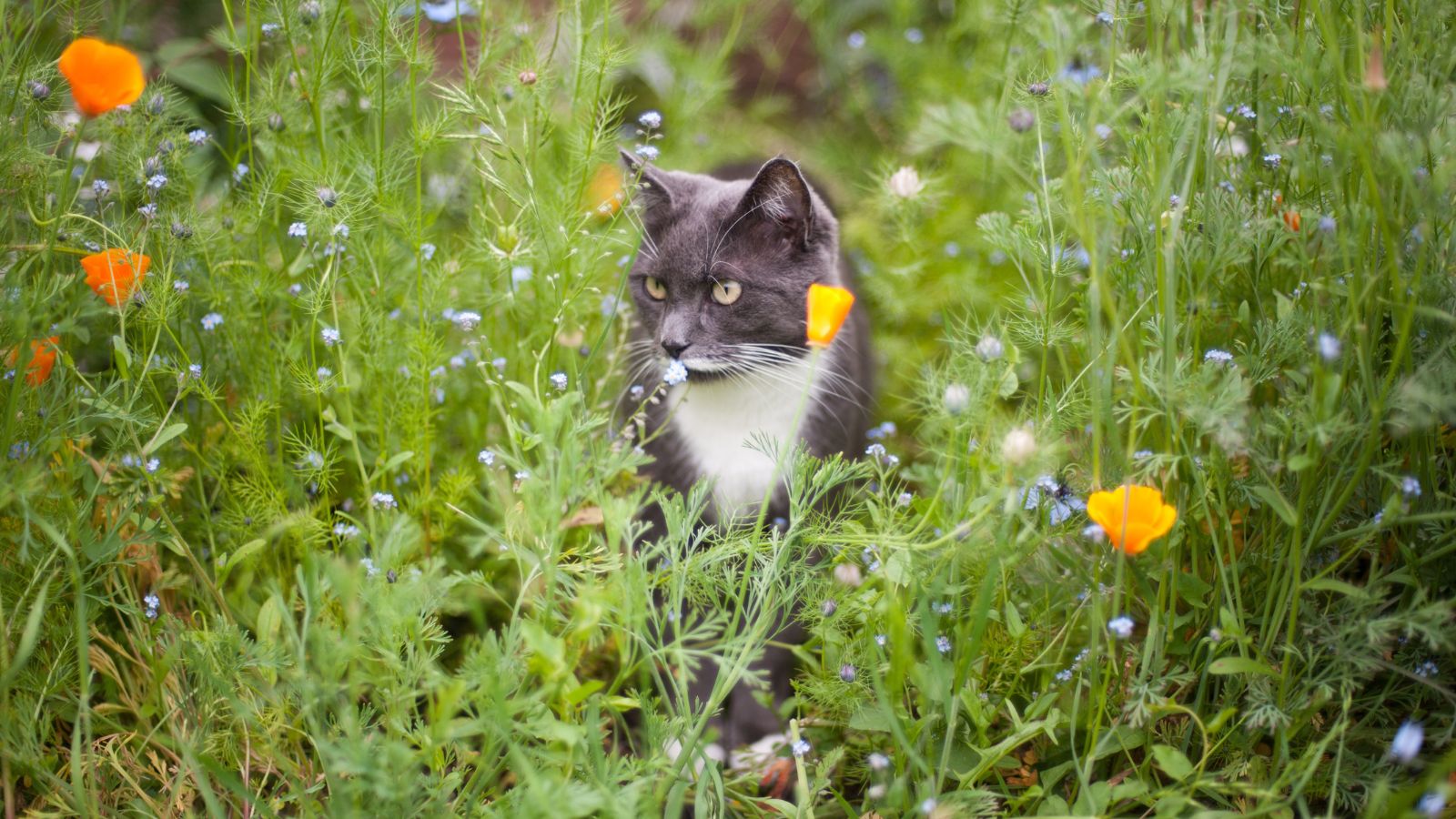4 simple and humane ways to deter stray cats from your home and yard
Stray cats can be a nuisance in your home and yard – here are 4 humane ways to deter them


Stray cats can be a common yet challenging issue. While cute, they can cause havoc inside your home and damage your yard. To help you manage this problem humanely, we've consulted with pest control experts to provide practical solutions to dissuade them from your property.
Similar to getting rid of squirrels, the key is to detering stray cats is to target the sources that make your space appealing to them and find natural ways to change this.
By addressing the root causes of their presence and understanding their sensitivities and behaviors, you can deter stray cats effectively and humanely. Here's how you can achieve this in four simple steps.
How to deter stray cats from your home and yard
'In my experience, cats are pretty sensitive to just about anything from more active deterrents like a sprinkler system to strange or strong scents and uncomfortable textures,' explains Brett Bennett, Director of Operations at PURCOR Pest Solutions. Leveraging these natural sensitivities is an effective and harmless strategy to make your home and yard less appealing to stray cats, thereby keeping them at bay.
1. Remove attractants
'Begin by identifying and removing anything that might attract cats,' advises Bricks Coggin, the CEO of ABCs Puppy Zs. 'This includes securing trash bins, cleaning up food scraps, and removing bird feeders that might draw birds (and subsequently cats) to your yard.' If you have a sandbox, use lids or covers for sandboxes to prevent cats from using them as litter boxes.
2. Use natural deterrents
Cats are highly sensitive to scents, so incorporating the scents garden pests hate will make your home and yard an unattractive environment for cats and prevent them from venturing into your space.
You can sprinkle coffee grounds (which can also help boost the acidity of your soil), spray citronella, or place orange peels around your patio, deck, or garden. You can also mix vinegar with water and spray it around areas where cats frequent.
Design expertise in your inbox – from inspiring decorating ideas and beautiful celebrity homes to practical gardening advice and shopping round-ups.
Additionally, Jeremy Yamaguchi, CEO of Lawn Love says: 'There are many pest-repellent plants that will naturally deter cats due to their scent. These include lavender, rosemary, lemon balm, and lemon thyme.
'However, many scents commonly recommended for repelling cats can be toxic to humans and pets if ingested or, in some cases, cause skin irritation on contact. This includes plants like pennyroyal, rue, and “scaredy-cat” plants. So, I wouldn’t advise planting these because although they may deter cats, they can cause a lot of harm.'
3. Block access points
'Blocking access points to areas you don’t want cats to enter is essential,' says Dan Bailey, President at WikiLawn. 'Cats don't like the feeling of certain textures. If you have a garden, place small-gauge chicken wire, such as this one from Amazon, under the soil, and it will keep stray cats away from your garden.' You can also use lattice to cover gaps under porches, decks, or sheds.
Planting dense bushes or thorny plants around the perimeter can also deter cats from entering. Mulch with rough edges is another thing that cats loathe; they do not like stepping on it.
Inspect for any broken fencing that may be allowing cats to slip through. Ensure it is tall and secure to prevent cats from entering your yard.
4. Use motion-activated devices
Cats are intelligent beings and do not venture near the area after observing the negative consequences of being in proximity with it,' says Nathan Thorne, a gardening expert at Handy Flowers. Installing harmless physical deterrents that cats find confusing or offputting should ensure they learn to learn over time to avoid your home altogether.
Ryan Farley, CEO of LawnStarter, says: 'I've had the best luck using motion-activated sprinklers for stray cats, given how many cats react to water! These sprinklers are completely harmless and, upon activation, just shoot water like a normal sprinkler. I've found that even the sound of them coming on is usually enough to spook off a stray cat, and they don't tend to return if they get scared a few times.'
As an alternative to buying motion-activated sprinklers, consider this Orbit B-hyve Smart 1-Outlet hose faucet sprinkler timer from Walmart. This can help you save water in the long run by allowing you to turn on attached sprinklers remotely when you see cats in your yard and turn them off as soon as they have left.
Additionally, ultrasonic-repellent devices produce an audible sound frequency beyond the range of hearing cats, which scares them when they come within the range of emission of the signal. It is best to locate them in areas that are easily seen, such as near pathways (doors, gardens). For covering doorways, one device should be enough, but if the area is much larger, it will be useful to have two or even three devices.
FAQs
What are TNR programs?
'Community Trap-Neuter-Return (TNR) programs are designed to help manage the stray cat population,' explains Bricks Coggin, the CEO of ABCs Puppy Zs. 'It is ineffective to merely trap and evacuate the cats, as new cats may move in to take advantage of the availability of food scraps. TNR is one of the most effective long-term solutions, as it reduces the number of cats and minimizes behaviors like spraying and fighting.'
Why are humane cat deterrents best?
'Undeniably, treating all animals with compassion and employing humane methods is essential,' says Dr. Kathryn Dench, Chief Scientific Advisor at Paw Origins. 'It is also the most effective way to keep cats away from your home and yard since approximately 75% of the time, non-harmful deterrents are more effective because they do not provoke defensive or repeat behavior from the cats, providing a more sustainable solution to the issue.'
Offering alternative shelters for cats away from your home (while not always practical) can encourage them to leave your home and yard. Setting up a small, discreet cat shelter in a less-used area of your yard can provide stray cats with a place to stay, reducing their need to seek shelter near your home.
Next, learn how to keep your own cats of your Christmas tree.

Lola Houlton is a news writer for Homes & Gardens. She has been writing content for Future PLC for the past six years, in particular Homes & Gardens, Real Homes and GardeningEtc. She writes on a broad range of subjects, including practical household advice, recipe articles, and product reviews, working closely with experts in their fields to cover everything from heating to home organization through to house plants. Lola is a graduate, who completed her degree in Psychology at the University of Sussex. She has also spent some time working at the BBC.